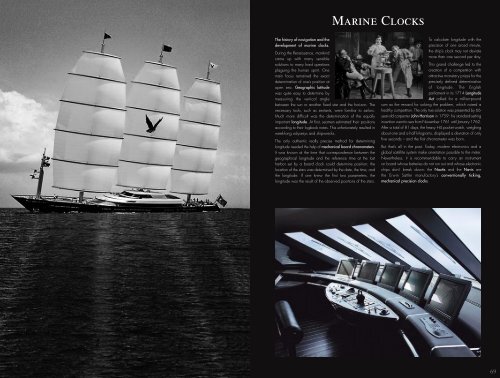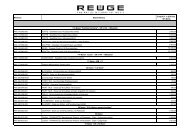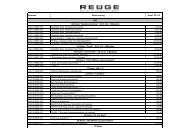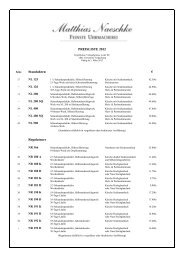TRADITION · PRECISION · PERFECTION - Erwin Sattler
TRADITION · PRECISION · PERFECTION - Erwin Sattler
TRADITION · PRECISION · PERFECTION - Erwin Sattler
You also want an ePaper? Increase the reach of your titles
YUMPU automatically turns print PDFs into web optimized ePapers that Google loves.
The history of navigation and the<br />
development of marine clocks.<br />
During the Renaissance, mankind<br />
came up with many sensible<br />
solutions to many hard questions<br />
plaguing the human spirit. One<br />
main focus remained the exact<br />
determination of one’s position at<br />
open sea. Geographic latitude<br />
was quite easy to determine by<br />
measuring the vertical angle<br />
between the sun or another fixed star and the horizon. The<br />
necessary tools, such as sextants, were familiar to sailors.<br />
Much more difficult was the determination of the equally<br />
important longitude. At first, seamen estimated their positions<br />
according to their logbook notes. This unfortunately resulted in<br />
week-long odysseys and shipwrecks.<br />
The only authentic really precise method for determining<br />
longitude needed the help of mechanical board chronometers.<br />
It was known at the time that correspondence between the<br />
geographical longitude and the reference time at the last<br />
harbor set by a board clock could determine position: the<br />
location of the stars was determined by the date, the time, and<br />
the longitude. If one knew the first two parameters, the<br />
longitude was the result of the observed positions of the stars.<br />
Marine Clocks<br />
To calculate longitude with the<br />
precision of one arced minute,<br />
the ship’s clock may not deviate<br />
more than one second per day.<br />
This grand challenge led to the<br />
creation of a competition with<br />
attractive monetary prizes for the<br />
precisely defined determination<br />
of longitude. The English<br />
parliament in its 1714 Longitude<br />
Act called for a million-pound<br />
sum as the reward for solving the problem, which raised a<br />
healthy competition. The only true solution was presented by 66year-old<br />
carpenter John Harrison in 1759: his standard-setting<br />
invention went to sea from November 1761 until January 1762.<br />
After a total of 81 days, the heavy H4 pocket watch, weighing<br />
about one and a half kilograms, displayed a deviation of only<br />
five seconds – and the first chronometer was born.<br />
But that’s all in the past. Today, modern electronics and a<br />
global satellite system make orientation possible to the meter.<br />
Nevertheless, it is recommendable to carry an instrument<br />
on board whose batteries do not run out and whose electronic<br />
chips don’t break down: the Nautis and the Navis are<br />
the <strong>Erwin</strong> <strong>Sattler</strong> manufactory’s conventionally ticking,<br />
mechanical precision clocks.<br />
69






